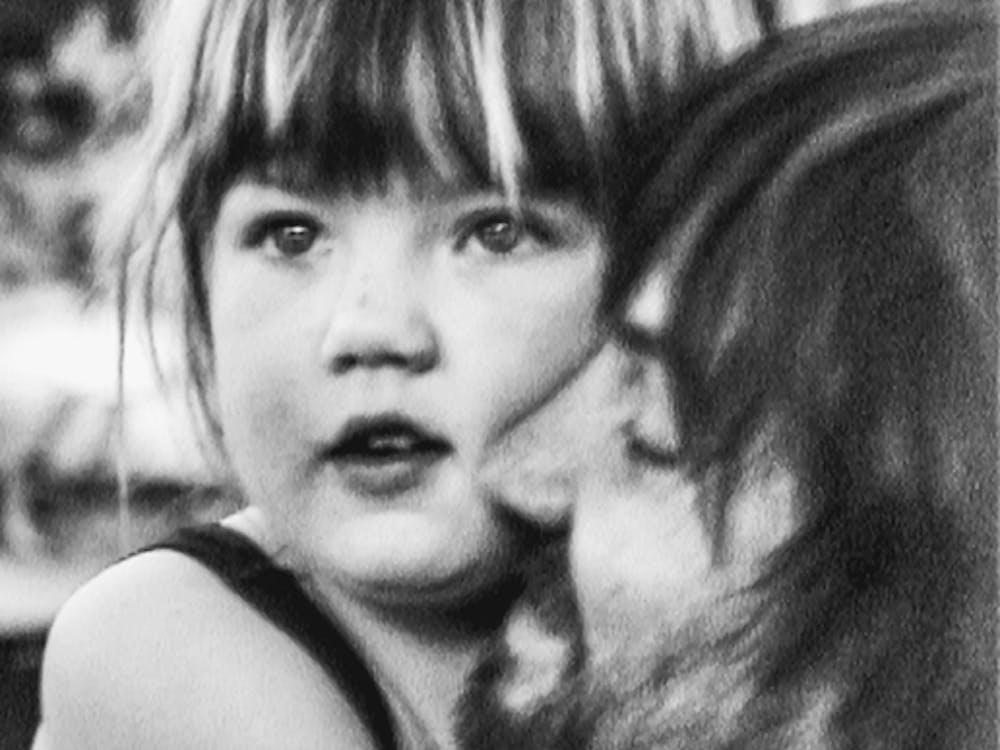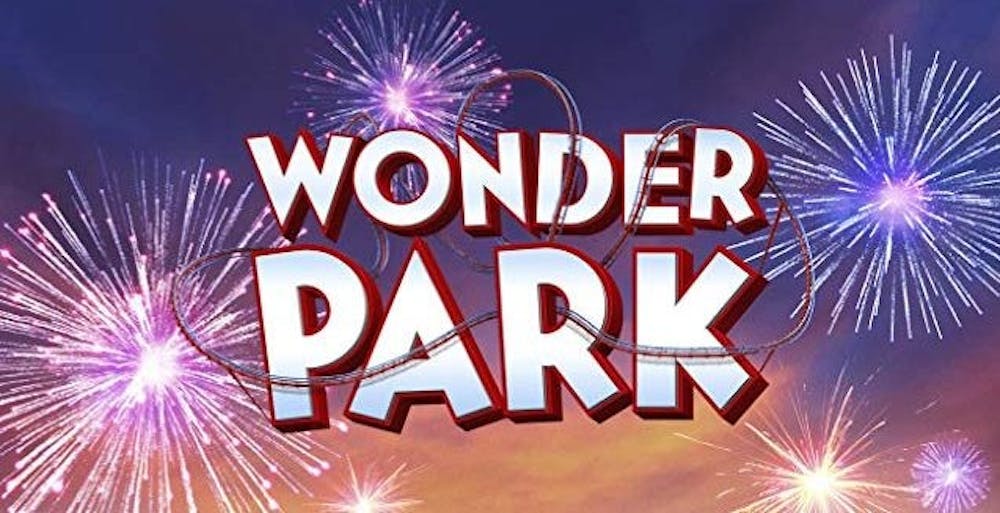Around this time last year, I was returning from a week-long excursion with my father down to Universal Studios Orlando, my first foray into the globe-branded theme park chain, and found myself having a legitimately good time for the first time in what felt like ages.
I distinctly remember, after going through most of the rides at the resort, jokingly suggesting that we take on Shrek 4-D, an aging theater attraction dedicated to the halitosis-ridden green goof and his highly-profitable adventures. The first red flag should have been the fact that the pre-show video, played on loop in the lines outside, highly advertised VHS copies of the original Shrek being available in the gift shop (they weren’t). The second red flag should have been that the pre-show proper was heralded by a guy doing his best Tyler Perry impression teaching audience participation games centered around the word “flogging” to a swathe of sun-baked tourists huddled into a literal medieval torture dungeon. The third red flag was the film itself. Despite its short runtime, Shrek 4-Dwas nothing but an assault of dated pop culture references (even for the ride’s early 2000s debut), uninspired visual gags, and what can only be described as thermonuclear dad puns, all “aided” by chairs that jostle the viewer repeatedly and continuously, while also spraying you with water and farts.
As we were leaving the film, my father looked at me with a sense of shame and regret I had never truly seen in him before. Is it possible for a film, intended for the enjoyment of families and average Joes like you or I, to be so bad that it could make a father consider financially and emotionally disowning his first-born son?
Check your lapbars, folks, because Wonder Park dares to claim that title and I’ve made a park of my own to prove it. Please, step into…
Great moments with dead moms
Wonder Park (released March 14, 2019), is a computer-generated family film, released by Paramount and Skydance Animation under the Nickelodeon Movies label as a stealth pilot for a cartoon on the aforementioned network. In no uncertain terms, it is a poorly thought-out version of Disney-PIXAR’s Inside Out, feeding from the table scraps of four other movies, at least two episodes of Phineas and Ferb and Kingdom Hearts of all things, changing things just enough to make sure that nobody would notice.

Image from IMDb
In the film, we follow June (newcomer Brianna Denski), a red-haired moppet who spends her nights mentally constructing Wonderland, “the most splendiferous place on Earth!” alongside her mother (Jennifer Garner). However, after her mother is diagnosed with Type 4 Plot Conventitus and has to go away for treatment, she decides to pack up her childish delusions of grandeur in favor of…nothing, really. Shenanigans ensue, which ultimately causes our pint-sized protagonist to stumble upon the decrepit remains of her dream park in the real world, alongside its caretakers: Boomer, the narcoleptic welcome bear (Ken Hudson Campbell), Gus and Cooper, a pair of beavers (Kenan Thompson and Ken Jeong, respectively), Greta, a warthog (Mila Kunis) and Steve, an uptight porcupine (John Oliver doing his very best John Oliver impersonation).
Together, the group has to find Peanut (Norbert Leo Butz), Wonderland’s de facto mascot, and convince him to come out of exile in the park’s Walmart-quality version of the Kingpin’s Collider from Into the Spider-Verse. They need him to use his literal magic marker to do away with the army of Chimpanzombies chipping away at the park in order to satiate The Darkness, a swirling black sky-hole.
As with a lot of the films I’ve written about, I am most certainly not in the core demographic for whom this is intended; however, it’s surprising just how lazy and trite Wonder Park comes off. As I said earlier, this movie is just an amalgamation of bits from other, better movies and games; however, the inclusion of these overly-used plot beats and tropes (for example, the deathly ill/dead mom as a plot device, the fat character’s jokes mainly being at the expense of his waistline, the pointless friend next door who has a crush on the lead, etc.) leave the overall picture feeling scattered, confused, and don’t actually talk about the issues at hand (specifically regarding the power of imagination and its capacity as a coping device) with any level of seriousness or maturity beyond the surface. It’s ridiculous at best and potentially malicious at worst.
Perhaps the most glaring issue of all: the words “Wonder Park” are never mentioned whatsoever throughout the film. The park in the film is named Wonderland (as mentioned prior). The characters constantly refer to it by this name (the phrase “You put the ‘wonder’ in Wonderland” is used repeatedly throughout the film). As nitpicky as this may sound, it’s just downright baffling.
The bumper cars that don’t bump
The problems surrounding this film, however, don’t end at a story level. From a sheer visual perspective, the characters and overall design language have this especially generic quality that it’s genuinely hard to explain. There are moments in the film that ring somewhat inspired (a sequence where our leads have to escape a flowing river of literal fireworks makes for a unique concept, if only in comparison to everything else here). Outside of that, the dirty, overgrown amusement park aesthetic that dominates a lot of the time in Wonderland is at least a different setting than what is normally sought for these types of movies.

Image from IMDb
The characters themselves especially have this air of blandness about them. June, outside of the massive-Alita-eyes she has in comparison to the rest of the human cast, lacks any real defining visual traits to differentiate her from being just your generic children’s movie protagonist. The same could be said for the park’s cast, which are all just lightly stylized talking animals…except for Boomer, who is blue. I feel these designs would have been more effective if this film were live action and these characters were done using Jim Henson-style puppetry, but that’s irrelevant to the facts at hand. Outside of that, the human characters in Toy Story, a film known for having especially bad human animation (as a result of technological restraints) feel more real than any of the characters here.
Outside of our leads, the rest of the film could be easily described as Diet PIXAR. Hyper-realistic textures and details are just stylized enough to remind you that you’re watching a cartoon, but not stylized enough to truly justify why this needed to be animated in the first place. The score, by Steven Wright, tries to ape Michael Giacchino’s style of repetition and alteration to no real effect. “Jokes” that appeal to the whole family never truly hit. It gets to a point where you have to ask, who fell asleep at the wheel and let this mediocrity run rampant?
The choo-choo train with the voice of a dead man
You may have noticed earlier on that I neglected to include the name of the director when discussing the broad specifics of this film, and that is not a mistake.
Wonder Park has no director or, rather, it had a director.

Image from IMDb
Wonder Park (or as it was originally titled, Amusement Park) was directed by former PIXAR animator Dylan Brown up until January 2018, where he was removed from the project in full after multiple allegations of sexual harassment in the workplace came to light, along with Jeffery Tanbor (who was signed on to play Boomer until reports of his behavior on the set of Arrested Development went public). Brown was replaced by animation industry veteran and Cow and Chicken creator David Feiss alongside two other co-directors…yet here’s where things get tricky. Paramount didn’t want to credit Feiss because he allegedly came onto the project at the tail-end of production, and they certainly didn’t want to be associated with Brown given the current social climate.
So, seeing as Director’s Guild rules got in the way of crediting Feiss as director due to his limited contributions (and Alan Smithee wasn’t returning anybody’s calls), Paramount decided to quietly not play the game at all. As per the credits, there was nobody steering the ship. Now, the modern animated film is, by nature, so collaborative that a production could hypothetically get away without a proper director. In turn, the amount of time it takes to make a film of this caliber inevitably means that the potential for films to copycat one another is possible.
The lack of a voice at the heart of a film like this leads to people higher up the totem pole taking more control. The studio executives, now holding the proverbial “magic marker,” potentially started taking less risks or moves that fit the story trying to be told, and focused solely on finishing the film so it can make back the money put in. That’s so the shareholders won’t get angry, so the executives can focus on whatever blockbuster down the line that will completely eclipse this minor blip in the long run. It’s at that point that the filmmaking process becomes fast, dirty, and a race to make it as safe as possible so that financial loss can be at a minimum.
I realize that this sounds especially cynical, but if there is anything that can truly explain Wonder Park’s poorly-thought, self-congratulatory attitude, its ham-fisted attempts at trying to match the PIXAR formula, and, ultimately, its pointlessness outside of kickstarting a shiny new franchise for the home of Spongebob, it’s as simple as that.
The cinematic equivalent of a chicken running around with its head cut off.
Exit through the gift shop (and don’t come back)
In a lot of ways, Wonder Park is a uniquely flawed film. Its development throughout the years was plagued by numerous controversies, almost up until release, and yet it still got made. It attempts to inspire awe and legitimate wonder in the viewer, to show them the power of creativity and how it can help one cope in dark days, yet it wholly fails to give the audience anything more creative than the (almost) titular park itself and a half-baked moral carelessly regurgitated from far better films. The characters are bland and flat, the story is trite, the score unmemorable, and the visuals likewise. This is a film that feels like it was made solely out of spite to all who opposed it, with reckless irresponsibility for the intelligence and taste of moviegoers who dare lay eyes upon it.
To quote the words of Sir Alfred Yankovic, “This sure ain’t no E-ticket, think I’ll tell’em where to stick it, ‘cause I’m never coming back this way again. Oh no.”
Oh God no.

Featured Image: IMDb
Images: IMDb
For more entertainment related content, visit us at Byte BSU!



















